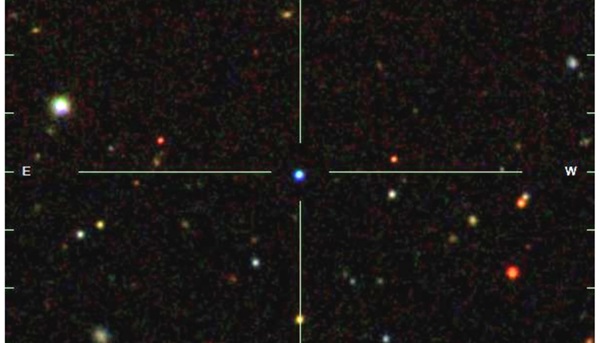About 2,700 light-years away from Earth, an incredibly rare event is occurring: a white dwarf and brown dwarf are closely orbiting each other in less than an hour and a half.
The white dwarf, which scientists are calling WD 1202-024, was discovered in 2006. WD 1202 became a white dwarf about 50 million years ago when it ran out of usable hydrogen in its core. When a study showed WD 1202 consistently changing in brightness, astronomers assumed it was a variable star. While studying what caused the change in brightness, astronomers were surprised to find that it’s actually caused by a companion brown dwarf.
The pair is only separated by about 192,625 miles (310,000 kilometers), less than the distance between the Moon and Earth. The white dwarf’s gravity is so strong that it’s pulled the brown dwarf into an orbit with a period of 71 minutes. That means the two objects zip around each other at speeds of 62 miles per second (100 km/s).
The brown dwarf, like all brown dwarfs, is too big to be considered a planet, but not big enough to sustain nuclear fusion. This brown dwarf is 67 times the mass of Jupiter and about the equivalent diameter. Because white dwarfs are small husks of former stars, WD 1202-024 is much smaller than its progenitor star. The more comparable sizes of these two objects are what cause noticeable brightness changes when the brown dwarf passes between the white dwarf and observers on Earth.
WD 1202 burns at a scorching 40,352° Fahrenheit (22,000° Celsius), making it bright enough to see, while the brown dwarf is too faint to be spotted without the help of its white dwarf companion.
Astronomers believe the brown dwarf was inside WD1202 about 50 million years ago when WD 1202 expanded to become a red giant, becoming bigger than the brown dwarf’s orbital distance and engulfing the entire brown dwarf. But the brown dwarf survived because the density of the gas in the red giant’s outer layers dropped while it expanded, saving the brown dwarf from becoming too hot.
Today, the brown dwarf is orbiting so closely to WD 1202 that it’s slowly getting drawn into its host star. Astronomers believe in about 250 million years the brown dwarf will get so close that the white dwarf’s gravity will draw material from the brown dwarf and eventually flare up as the material just above its surface explodes.
During this explosion, the entire system will flare brighter before cooling and dimming again, to repeat all over again in years to come.










